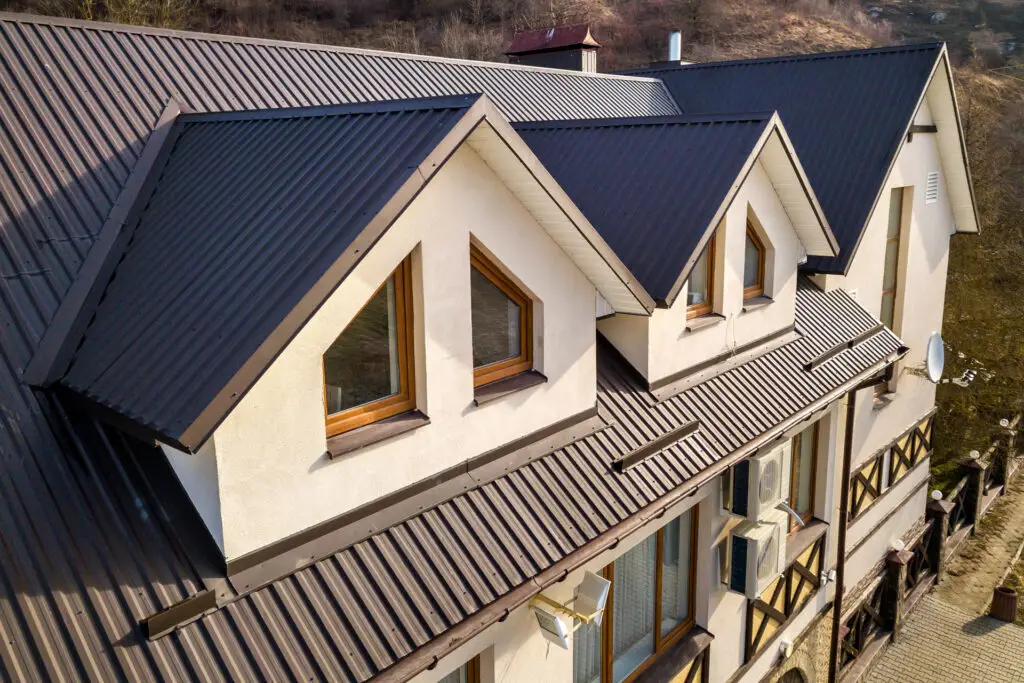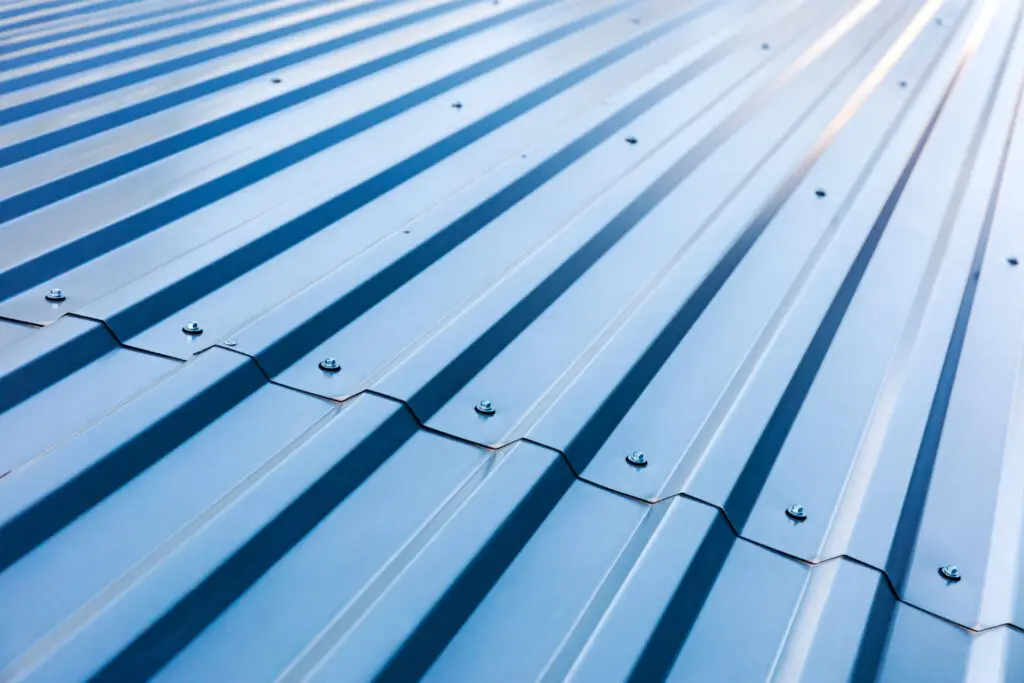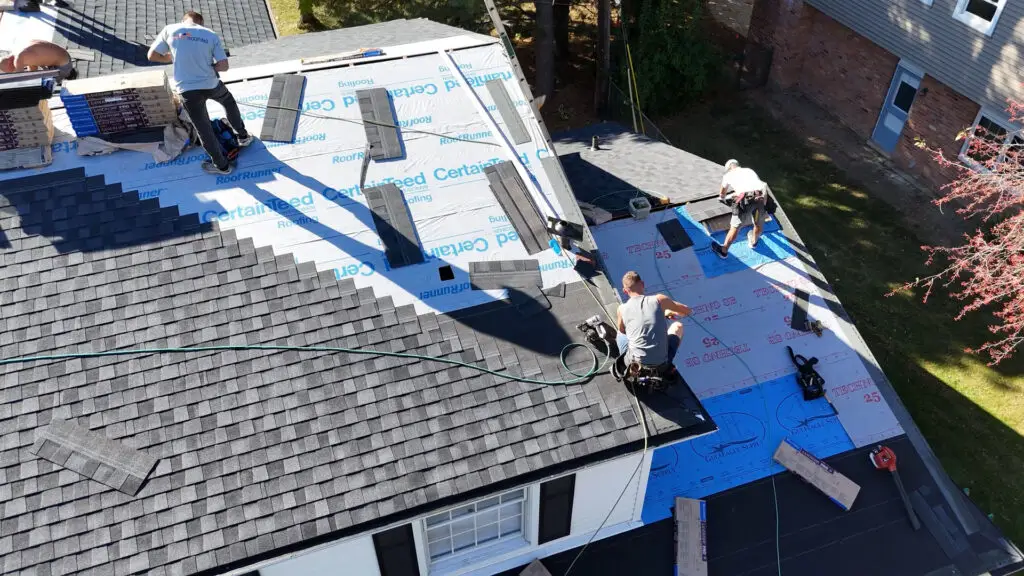If you’ve spotted water stains on your ceiling, noticed a musty smell in the attic, or found damp insulation, you may be dealing with a roof leak. Roof leaks can quickly escalate from minor annoyances to costly structural damage if not addressed early. The good news? With the right steps, many small leaks can be temporarily repaired by homeowners before turning into major problems.
In this guide, we’ll explain how to repair roof leak issues safely, when to DIY, and when to bring in trusted experts like BCM Roofing for lasting protection.
Step 1: Identify the Source of the Leak
Before you can begin any repairs, you need to locate exactly where the water is entering. This can be trickier than it sounds—leaks often travel along rafters and beams, surfacing far from the actual breach in your roof.
How to find the source:
- Head into your attic with a flashlight while it’s raining, or shortly after a storm.
- Look for telltale signs: damp insulation, water stains on wood or drywall, mildew growth, or light shining through the roof deck.
- Pay extra attention to roof penetrations—chimneys, skylights, vents, and valleys—since these are common culprits.
Locating the precise entry point is crucial if you want to successfully learn how to repair roof leak areas without missing hidden damage.
Step 2: Assess the Damage
Once you find the leak source, take a moment to assess the scope of the issue. This helps determine whether a quick fix is enough or if professional repairs are needed.
Ask yourself:
- Is the problem limited to one or two shingles, or is it more widespread?
- Are there visible cracks, punctures, or lifted edges around flashing or vents?
- Is there mold, rot, or water-damaged wood indicating long-term exposure?
If the damage appears contained and your roof is otherwise in good shape, you may be able to handle the repair yourself. But if there are signs of extensive water infiltration, it’s best to bring in a pro.
Step 3: How to Repair Roof Leaks (Temporary DIY Methods)
While a licensed roofer should always handle permanent fixes, here’s how to repair roof leak areas temporarily to protect your home until help arrives:
Replace Damaged Shingles:
- Use a pry bar to lift the damaged shingle and remove the nails.
- Slide a new shingle into place, secure with nails, and seal the edges with roofing cement to prevent further water intrusion.
Reseal Flashing or Vents:
- Inspect flashing around chimneys, vent pipes, and roof edges.
- Apply a vinyl-based roofing sealant to small cracks or gaps.
- Use roofing tape or patch kits for torn flashing or separated seams.
Patch Holes with Roofing Tape:
- Clean the affected area with a brush to remove debris or granules.
- Apply self-adhesive roofing tape or a membrane patch.
- Cover edges with roofing cement to prevent water from lifting the patch.
These solutions are only meant as stopgaps. For long-term peace of mind, schedule a professional inspection to ensure the leak is fully resolved.
Step 4: Know When to Call the Pros
DIY repairs can help buy time, but they aren’t always enough. If you’re facing any of the following, call a licensed roofer:
- Multiple leak areas or recurring issues after rain
- Sagging wood, water spots on ceilings, or attic mold
- Roof damage near structural components like valleys or skylights
- An inability to safely access or work on your roof
At BCM Roofing, we take roof leaks seriously. Our experienced team provides comprehensive inspections, transparent recommendations, and high-quality repairs that last.
Step 5: Prevent Future Leaks
Once your roof is patched, it’s time to think about prevention. Understanding how to repair roof leak issues is helpful—but preventing them is even better.
Prevention tips:
- Schedule annual roof inspections, especially after severe weather events.
- Keep gutters clear to ensure proper drainage and avoid water backup.
- Trim nearby trees to prevent branch damage during storms.
- Replace deteriorating flashing or shingles before a leak starts.
Staying proactive can save you thousands in future repair costs—and protect your home’s structure year-round.

BCM Roofing: Your Local Roof Leak Experts
Knowing how to repair roof leak damage can help you minimize immediate issues, but long-term protection comes from experienced craftsmanship. At BCM Roofing, we offer full roof inspections, expert repairs, and honest recommendations—whether your leak needs a simple patch or a full section replacement.
We don’t just fix leaks—we make sure they don’t come back.
Final Thoughts
When it comes to how to repair roof leak damage, acting quickly can save you thousands in long-term repairs. Whether you’re confident with a caulk gun or need a full roof replacement, BCM Roofing is here to help.
Don’t wait for the next storm. Contact us today for a free roof inspection and honest recommendations you can trust.
FAQs: How to Repair Roof Leaks
Can I learn how to repair roof leaks myself?
Yes, some minor roof leaks—like a single cracked shingle or a small gap near flashing—can be temporarily repaired using roofing sealant, tape, or replacement shingles. However, DIY fixes are rarely permanent. If you’re unsure of the leak’s source or extent, or if you notice recurring leaks, it’s safest to have a licensed roofer inspect and handle the repair to prevent long-term water damage.
How do I know if the leak is serious?
A serious leak often shows signs like expanding ceiling stains, visible mold, musty odors, or sagging drywall. You may also notice water in the attic or deteriorating insulation. These issues could indicate deeper structural problems—and the longer they go unchecked, the more costly the repair becomes.
What’s the cost to repair a roof leak?
Roof leak repair costs vary based on the location, size of the leak, materials involved, and labor. Small repairs (like sealing flashing) may cost under $300, while larger issues involving extensive damage or multiple leaks could exceed $1,000. BCM Roofing offers free inspections and honest estimates so you’re never caught off guard.
Should I file a roof insurance claim for a leak?
If the leak was caused by storm damage, falling debris, or another covered event, you may be eligible for reimbursement. Avoid repairing the roof before contacting your insurer. Document the damage with photos, and have a professional inspection done to support your claim. BCM Roofing can work with your insurance company to simplify the process.
What’s the most common cause of roof leaks?
Flashing failures (around chimneys or vents), cracked or missing shingles, ice dams, and poor installation are among the most common causes. Improper attic ventilation and clogged gutters can also contribute to leaks by trapping moisture or diverting water where it shouldn’t go.


